Today Current Affairs: 23rd August 2021 for UPSC IAS exams, State PSC exams, SSC CGL, State SSC, RRB, Railways, Banking Exam & IBPS, etc
Table of Contents
China’s Three-Child Policy:
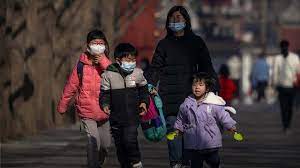
In a major policy shift aimed at increasing the country’s declining birth rate, China relaxed its previous two-child norm and endorsed a three-child policy mooted by the ruling Communist Party.
- The resolution was passed along with several others during a meeting of the National People’s Congress (NPC).
- Earlier this year, after China’s census data showed population growth slipping to its slowest rate since the 1950s, the country announced that it would allow three children per married couple — five years after it first relaxed its controversial one-child policy to two.
- China’s one-child policy, which had been enforced by former leader Deng Xiaoping in 1980, had remained in place until 2016, when fears of a rapidly ageing population undermining economic growth forced the ruling Communist Party to allow two children per married couple.
- While the relaxation did result in some improvement in the proportion of young people in the country, the policy change was deemed insufficient in averting an impending demographic crisis.
- Even as a three-child policy has now been announced, many remain skeptical, wondering how it would be able to address challenges that the 2016 change could not, due to factors such as higher cost of living and long working hours.
- The United Nations expects China’s population to begin declining after 2030, but some experts say this could happen as early as in the next one or two years.
- By 2025, the country is set to lose its ‘most populous’ tag to India, which in 2020 had an estimated 138 crore people, 1.5 per cent behind China
Karnataka State Mental Health Authority:
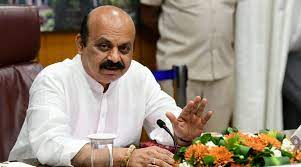
Formation of Karnataka State Mental Health Authority in process.
- According to WHO, Mental health is a state of well-being in which an individual realizes his or her own abilities, can cope with the normal stresses of life, can work productively and is able to make a contribution to his or her community.
- Mental health issues following the COVID-19 pandemic stem from ‘normal’ people being exposed to ‘extraordinary situations’.
- The presentations are myriad, and include emotional difficulties like anxiety, depression, biological effects like sleep, appetite disturbances, substance misuse and post-traumatic distress.
- More complex array of challenges to vulnerables like women,children and elderly facing domestic violence,social isolation, increased screen time and poverty have negatively affected their mental health.
According to WHO(2020):
- India accounts for 36.6 percent of suicides globally.
- About 7.5 per cent Indians suffer from some mental disorder and by the end 2020 it will shoot upto roughly 20 percent.
- According to the numbers, 56 million Indians suffer from depression and another 38 million Indians suffer from anxiety disorders.
- The contribution of mental disorders to the total disease burden in India in terms of DALYs(Disability adjusted life year) increased from 2.5% in 1990 to 4.7% in 2017.
- But, per 100,000 population there are psychiatrists (0.3), nurses (0.12), psychologists (0.07) and social workers (0.07), while the desirable number is anything above 3 psychiatrists and psychologists per 100,000 population.
Hindustan-228:
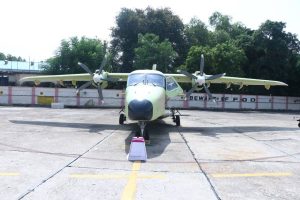
On August 15, the public sector aircraft manufacturing company Hindustan Aeronautics Limited (HAL) carried out a successful ground run and low speed taxi trials of a commercial aircraft – Hindustan-228 – for ‘Type Certification’ by the Directorate General of Civil Aviation (DGCA).
- The type certification by the DGCA will enable HAL to get an international certification for the aircraft.
- The 19-seater Hindustan-228 or the Do-228 is the first major attempt in India to develop a small civil transport aircraft after the 14-seater Saras aircraft development program at the National Aeronautics Laboratory was shelved in 2009 on account of multiple problems in its development.
- The Hindustan-228 aircraft is built on the existing frame of the German Dornier 228 defence transport aircraft used by the defence forces.
- Despite producing aircrafts like the Hindustan Trainer-2 and its variant – the Hindustan Propulsion Trainer 32 (HPT-32) – for the Indian Air Force six decades ago, and more recently the Light Combat Aircraft (LCA) for the IAF, the Indian aviation sector has not produced any civil transport aircraft.
- Small civilian aircrafts are considered to be an essential element of the UDAN (Ude Desh ka Aam Naagrik) scheme that the central government is attempting to put in place for regional connectivity.
Islamic law Or Shariah:
The Taliban have pledged that women in Afghanistan will have rights “within the bounds of Islamic law,” or Shariah, under their newly established rule. But it is not clear what that will mean.
- Shariah is based on the Quran, stories of the Prophet Muhammad’s life and the rulings of religious scholars, forming the moral and legal framework of Islam.
- The Quran details a path to a moral life, but not a specific set of laws.
- One interpretation of Shariah could afford women extensive rights, while another could leave women with few.
- Critics have said that some of the Taliban restrictions on women under the guise of Islamic law actually went beyond the bounds of Shariah.
- The interpretations of Shariah are a matter of debate across the Muslim world, and all groups and governments that base their legal systems on Shariah have done so differently.
- Shariah lists some specific crimes, such as theft and adultery, and punishments if accusations meet a standard of proof.
- It also offers moral and spiritual guidance, such as when and how to pray, or how to marry and divorce.
- It does not forbid women to leave home without a male escort or bar them from working in most jobs.
Malabar Rebellion:

Former BJP national general secretary Ram Madhav Thursday said the Moplah rebellion of 1921 was one of the first manifestations of the Taliban mindset in India, and claimed the LDF in Kerala was celebrating it as a communist revolution.
- August 20 marks the centenary of the Malabar rebellion, which is also known as the Moplah (Muslim) riots.
- It had been an uprising of Muslim tenants against British rulers and local Hindu landlords.
- The uprising, which began on August 20, 1921, went on for several months marked by many bouts of bloodstained events. Some historical accounts state the uprising led to the loss of around 10,000 lives, including 2,339 rebels.
- It has often been perceived as one of the first nationalist uprisings in southern India.
- It has even been described as a peasant revolt. In fact, in 1971, the then Kerala government had included the participants of the rebellion in the category of freedom fighters.
- The incidents of the uprising took place in regions which are currently under the Malappuram district in north Kerala.
Surangam System:

The Karez System of Afghanistan is in threat whereas a similar system named Surangam in South India is thriving.
- Surangams resemble the karez System both in structure and spread.
- The surangam or suranga is usually found in northern Kerala and southern Karnataka.
- Surangam is basically a tunnel dug through a laterite hillock from the periphery of which water and moisture seeps out.
- Surangams are similar to Qanats which once existed in Mesopotamia and Babylon around 700 Before Common Era (BCE). By 714 BCE, this technology had spread to Egypt, Persia and India.
- Qanats are underground tunnel systems that bring infiltrated groundwater, surface water, or spring water to the earth’s surface using only gravitational force.
- This system has been very effectively used for domestic and agriculture purposes in dry areas of northern Malabar.
- Some people believe the surangam is indigenous and a likely origin of the suranga system refers to 18 Karhada Brahmin families that had been moved to the Kasargod area from modern-day Maharashtra in the 17th century under duress.
Karez System:
- The karez system is a legacy of its Persian cultural moorings.
- It has suffered extensive damage in 43 years of war and stares at an uncertain future under the Taliban’s second regime.
- Karez is a water harnessing technology in which groundwater is brought to the surface by a tunnel.
- In this system, no mechanical pump or lift is used.
- Gravity alone brings the water from the underground source.
- The technology originated in Persia/Iran and was widely used during the medieval period.
Uttarakhand’s Narayankoti Temple: Adopt A Heritage Project:

The Narayankoti temple (Uttarakhand) has been included under the Centre’s Adopt a Heritage project.
Adopt a Heritage Project:
- Launched on 27th September, 2017 (World Tourism Day), it is a collaborative effort by the Ministry of Tourism, Ministry of Culture and Archaeological Survey of India (ASI), State/UTs Governments.
- Aim: To develop tourism amenities at heritage/ natural/ tourist sites spread across India to make them tourist friendly, in a planned and phased manner.
- Implementation: The sites/monuments are selected on the basis of tourist footfall and visibility and can be adopted by private and public sector companies and individuals — known as Monument Mitras — for an initial period of five years.
- The Monument Mitras are selected by the ‘oversight and vision committee,’ co-chaired by the Tourism Secretary and the Culture Secretary, on the basis of the bidder’s ‘vision’ for development of all amenities at the heritage site.
- There is no financial bid involved.
- The corporate sector is expected to use Corporate Social Responsibility (CSR) funds for the upkeep of the site.
PM-KUSUM Scheme And Rooftop Solar Programme Phase-II:
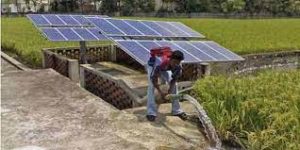
The Ministry of New and Renewable (MNRE) has conducted a review of implementation of Prime Minister’s Kisan Urja Suraksha Evam Utthan Mahabhiyan (PM-KUSUM) scheme and Rooftop Solar Programme Phase-II and suggested measures for expansion of the schemes.
- The PM-KUSUM scheme was launched by the MNRE in 2019, to support installation of off-grid solar pumps in rural areas and reduce dependence on grid, in grid-connected areas.
- The objective of the scheme is to enable farmers to set up solar power generation capacity on their barren lands and to sell it to the grid.
- The government’s Budget for 2020-21 expanded the scope for the scheme with 20 lakh farmers to be provided assistance to install standalone solar pumps; another 15 lakh farmers to be given help to solarise their grid-connected pump sets.
About Rooftop Solar Programme Phase II:
- The aim is to achieve a cumulative capacity of 40,000 MW from Rooftop Solar Projects by the year 2022.
- In a grid-connected rooftop or small Solar Voltaic Panel system, the DC power generated from the Solar Voltaic panel is converted to AC power using the power conditioning unit and is fed to the grid.
- This scheme is being implemented in the states by distribution companies (DISCOMs).
- The MNRE is providing a 40% subsidy for the first 3 kW and 20% subsidy beyond 3 kW and upto 10 kW of solar panel capacity.
Defence India Start-up Challenge 5.0:

The Ministry of Defence launched the 5th edition of the Defence India Start-up Challenge (DISC) under Innovations for Defence Excellence – Defence Innovation Organisation (iDEX-DIO).
- Thirty-five problem statements – 13 from the Services and 22 from Defence Public Sector Undertakings (DPSUs) – were unveiled under DISC 5.0. Some of which are: Situational awareness, augmented reality, Artificial Intelligence, aircraft-trainer, non-lethal devices, 5G network, Underwater Domain Awareness, Drone SWARMS and data capturing.
- DISC aims at supporting Startups/MSMEs (Micro Small and medium Enterprises)/Innovators to create prototypes and/or commercialize products/solutions in the area of National Defence and Security.
- It is meant to achieve self-reliance and foster innovation and technology development in the defence and aerospace sectors.
- It was launched by the Ministry of Defence in partnership with Atal Innovation Mission.
- Under the program, the start-ups, Indian companies and individual innovators (including research & academic institutions) can participate.
- DISC 5.0 will be a massive leap towards leveraging the startup ecosystem to develop India’s defence technologies, equipment design and manufacturing capabilities.
Indigenisation of Defence Sector:
- Indigenisation is the capability of developing and producing any defence equipment within the country for the dual purpose of achieving Self Reliance and reducing the burden of imports.
- Self-reliance in defence manufacturing is one of the key objectives of Department of Defence Production.
- Defence Research Development Organisation (DRDO), Defence Public Sector Undertakings (DPSUs), Ordnance Factory Board (OFB) and private organisations are playing a critical role in indigenisation of defence industries.
- The defence ministry has set a goal of a turnover of USD 25 billion in defence manufacturing by 2025 that included an export target of USD 5 billion worth of military hardware.
State Of The Climate On Latin America And The Caribbean 2020: WMO:
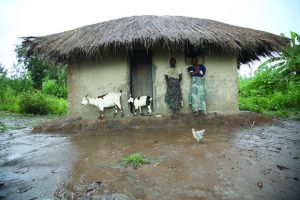
The World Meteorological Organization (WMO) has released a report on the impacts of climate change and extreme weather in Latin America and the Caribbean.
- 2020 was a year of unprecedented heatwaves, droughts, forest fires, cyclones and food insecurity for the region.
- The Intergovernmental Panel on Climate Change in its sixth assessment report had highlighted the impact of climate change on the Indian Subcontinent.
- Rise in Temperature:
- 2020 was among the three warmest years in Central America and the Caribbean and the second warmest year in South America.
- Sea surface temperature in the Tropical North Atlantic Ocean was significantly warmer than normal throughout the year.
- Severe heat waves dominated the region through most of the year, with temperatures soaring above 40°C several days in a row.
- Intense Rainfall:
- Intense rainfall resulted in landslides, floods and flash floods in the rural as well as urban areas of Central and South America towards the end of 2020.
- Forest Fires and Cyclones:
- Deforestation has only increased in the last four years due to clearing for cattle pasture and degradation from fires.
- Deforestation in the Amazon River Basin, which stretches across nine countries in South America and stores 10% of global carbon, has already led to a decline in its ability to regulate climate.
- The Atlantic basin recorded as many as 30 cyclones in 2020 — the highest so far in a single year.
Impact:
- Extreme weather events affected over 8 million people across Central America, exacerbating food insecurity in countries already crippled by economic shocks, Covid-19 restrictions, and conflict.
Desertification And Land Degradation Atlas: ISRO:

A document published by ISRO (Indian Space Research Organisation) named Desertification and Land Degradation Atlas shows that Land Degradation and Desertification has increased significantly in recent years.
- The Atlas provides a state wise area of degraded lands for the time frame 2018-19. It also provides the change analysis for the duration of 15 years, from 2003-05 to 2018-19.
- Earlier, the Prime Minister delivered a keynote address at the United Nations’ (UN) “High-Level Dialogue on Desertification, Land Degradation and Drought” via video conference.
Status:
Land Degradation:
- Some 97.85 million hectares (29.7%) of India’s total geographical area (TGA) of 328.72 mha underwent land degradation during 2018-19.
In 2003-05, 94.53 mha (28.76% of the TGA) underwent land degradation. The number increased to 96.40 mha (29.32% of the TGA) in 2011-13.
Desertification:
- Some 83.69 mha underwent desertification in 2018-19. This was greater than the 81.48 mha in 2003-2005 and 82.64 mha in 2011-13 that underwent desertification.
State wise Data:
- Around 23.79% of the area undergoing desertification / land degradation with respect to TGA of the country was contributed by Rajasthan, Maharashtra, Gujarat, Karnataka, Ladakh, Jharkhand, Odisha, Madhya Pradesh and Telangana.
- India witnessed an increase in the level of desertification in 28 of 31 states and Union territories between 2011-13 and 2018-19, a closer look at data in the atlas showed.




